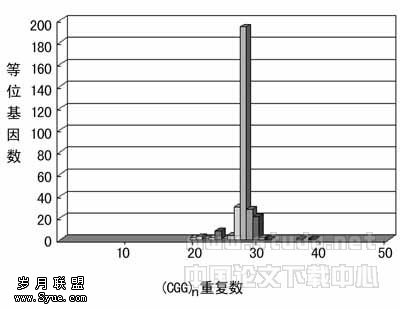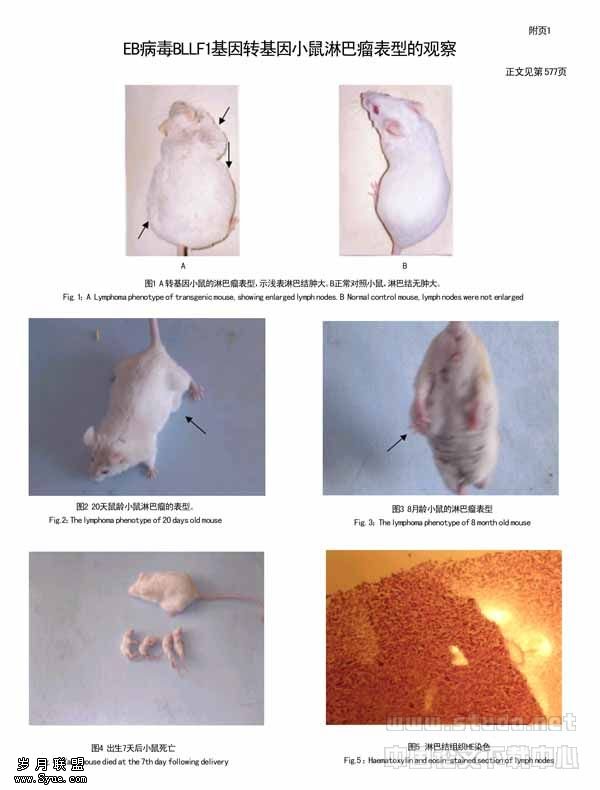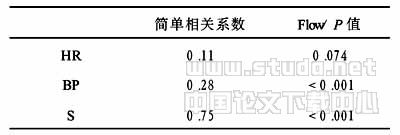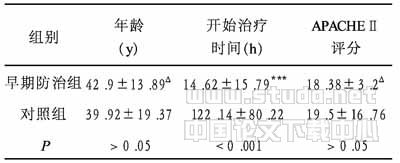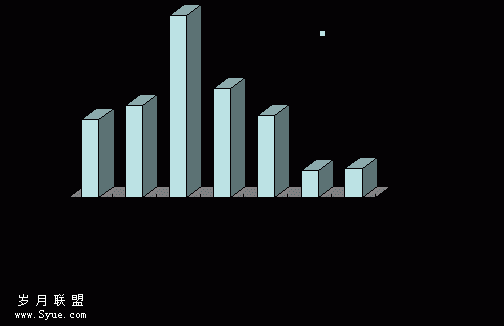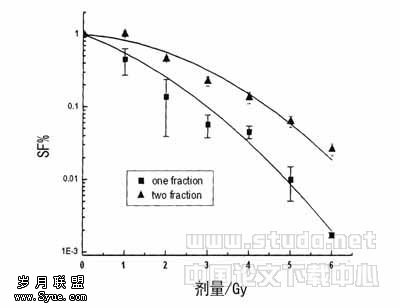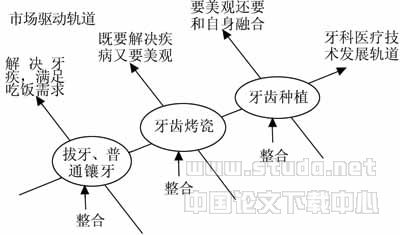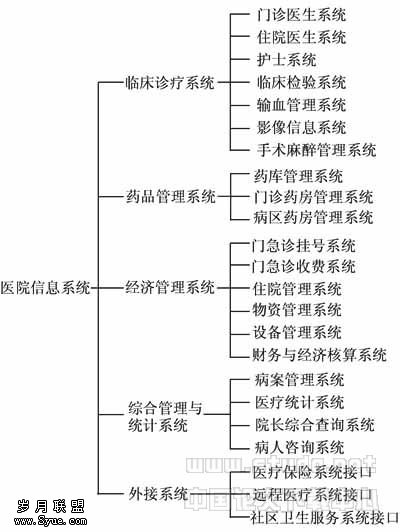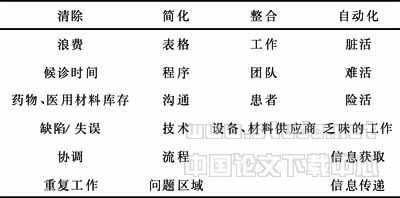uPA/uPAR的结构与功能及其在骨关节炎研究中的进展
作者:王维山,史晨辉 王永明
【关键词】 骨性关节炎
骨性关节炎(osteo arthritis,OA)是一种发病率随年龄增加而明显增加的退行性关节病变,其最基本的病理变化是由于力学和生物学因素引发关节软骨组织合成与降解之间的正常关系失衡。合成阶段是软骨细胞尽可能地修复已损伤的细胞外基质的过程;而降解阶段主要是软骨细胞产生蛋白酶消化基质并抑制基质自身的合成的过程。当后者远远超过前者时,就会加速软骨的降解,使软骨退化甚至破坏,从而产生关节病变〔1、2〕。目前,由软骨细胞所产生的参与细胞外基质及基底膜成分降解的蛋白水解酶成为国内外学者研究骨性关节炎发病机理的热点。本文就尿激酶型纤溶酶原激活剂(urokinasetype plasrinogen activator,uPA)及其受体(urokinasetype plasrinogen activator receptor,uPAR)在骨性关节炎研究中的进展情况作一综述。
1uPA/uPAR的结构与功能
11uPA的结构与功能
111uPA的结构
uPA是一种丝氨酸蛋白水解酶,基因DNA位于10号染色体的长臂上,大小为64kb,包含11个外显子,10个内含子。uPA分scuPA(singlechain urokinase plasrinogen activator)和tcuPA(twochain urokinase plasminogen activator)2种存在形式。其天然型(细胞刚分泌时)为单链分子,故称单链尿激酶型纤溶酶原激活剂即scuPA或称前uPA(prouPA),由411个氨基酸组成,相对分子量为496~546 ku的糖蛋白。单链肽链中赖氨酸158与缬氨酸159之间的肽腱经纤溶酶〔3〕,凝血调节因子〔4〕,组织蛋白酶〔5〕等水解使之转换成由2个二硫键连接的有活性的双链uPA分子即tcuPA,其肽链C末端为丝氨酸蛋白酶结构域,内含具有催化作用的三肽即组氨酸204,天冬氨酸255和丝氨酸356;而N末端含生长因子结构域和kringle组成,生长因子结构域是uPA与uPAR结合的部位,kringle结构域主要对uPA与uPAR结合后起稳定作用〔6〕。
112uPA的功能
uPA主要通过与uPAR结合发挥作用,但uPA也单独具有一定的功能:作用于生理、病理条件下的细胞迁移和组织修复、介导细胞外基质蛋白的水解、裂解Ⅳ型胶原酶、将纤溶酶原激活为纤溶酶、间接激活其他蛋白水解酶以及直接降解细胞外基质及基底膜〔3、7〕。另外,纤溶酶本身还可以直接裂解prouPA为uPA,从而形成一个正反馈环〔8〕。
12uPAR的结构与功能
121uPAR的结构
uPAR是uPA受体,又称CD87,是一种新的纤溶因子。最早由Stoppelli等在单核细胞和单核样U937细胞系中发现,其基因位于19号染色体的长臂,基因组DNA全长2123kb,由7个外显子和6个内含子所组成。uPAR的cDNA全长14kb,初始翻译产物包含313个氨基酸残基的多肽和22个氨基酸残基的信号肽,经过翻译后的加工过程,成熟的uPAR由283个氨基酸残基构成,胱氨酸占总氨基酸组成的10%,其分子量为546~605 ku。uPAR在丝氨酸282-甘氨酸283位点处以糖基化磷脂酰肌醇(GPI)锚定形式结合在细胞膜表面〔9〕。其具有3个通过二硫键连接的同源结构域〔10〕,每个结构域约含90个氨基酸残基。3个同源结构域分别为D1、D2、D3,其氨基端第一结构域D1的87个氨基酸是uPA氨基端缩合的部位,与uPA及prouPA有很高的亲和力,其他两个结构域D2和D3的绞链区含有决定uPAR趋化性的抗原决定簇。
122uPAR的功能
uPAR是一个多功能的分子,除可结合uPA外,还参与失活的uPAPAIs复合物的内吞,介导细胞信号传导及调节粘附分子功能等。在细胞迁移、新生血管的形成、组织重建等生理和病理过程中发挥重要作用〔7、11、12〕。
123uPAR与整合素
由于uPAR通过GPI锚定在细胞膜上,缺少跨膜成分,因此uPAR介导的细胞外信号必须依靠其他信号分子或受体的协同作用才能向细胞内传递信号,目前临床研究较为常见且清楚的是整合素家族〔11、13、14〕。Reuning等〔15〕研究认为整合素家族作为一类细胞表面分子,除介导细胞与细胞外基质(ECM)及细胞间黏附外,还可与uPA/uPAR结合,簇集在细胞表面继而诱导一系列细胞内信号传导途径。Wei等〔13〕采用免疫沉淀和蛋白印迹法发现,uPAR可与β1、β2、β3整合素结合,从而传递uPAR介导的信号。uPA/uPAR在整合素以及细胞外基质的共同作用下表达明显增强,而且整合素的效应也在uPA/uPAR存在下发挥更为充分,它们协同调控着细胞间的蛋白水解、黏附、迁移等〔16〕。
13uPA/uPAR结合体的功能
大分子prouPA和uPA与uPAR均有亲和力,其结合体的功能主要有:(1)与uPAR结合后的prouPA,要比游离状态下更易被活化为活性的uPA;(2)与uPAR结合的uPA活性明显增加,实验证实uPA的蛋白裂解活性至少增加20倍〔17〕;(3)二者结合后,可显著加速纤溶酶原转化为纤溶酶,从而促使纤溶酶裂解细胞外基质成分的功能增加;(4)另外,uPA/uPAR结合体可激活或者增加细胞外基质中胶原蛋白酶原和细胞因子的产生,共同参与对细胞外基质的降解〔18、19、20〕。
2uPA/uPAR与骨性关节炎
21uPA/uPAR在骨性关节炎中的表达及病理作用
骨性关节炎的病理基础是关节软骨基质中的蛋白聚糖和胶原纤维的降解,使关节软骨结构破坏,并引起一定程度的滑膜炎症。研究表明,uPA介导的细胞外基质(ECM)蛋白裂解作用与骨关节炎的关节软骨和骨的破坏密切相关〔17、21〕。Cerinic等〔22〕在体外培养的细胞和组织移植中均证实,骨关节炎的滑膜细胞、软骨细胞及内皮细胞均能合成表达uPA和uPAR。Walter〔23〕和Pap〔24〕分别发现uPA在骨性关节炎关节软骨破坏严重的表浅层强烈表达,并且uPA的水平与关节软骨破坏的严重程度密切相关,说明uPA系统在骨性关节炎基质降解中的重要作用。另外,Lavigne〔21〕和Massicotted〔25〕的研究表明在软骨下骨,uPA同样有较高的表达。
近年来大量实验证明:uPA/uPAR在骨性关节炎的病理过程中相互协同,共同促进对关节软骨的损伤作用〔18、20〕。二者在骨性关节炎病变过程中主要通过如下途径发挥其病理作用。其一为纤溶酶依赖性途径,指活化的纤溶酶,不仅能直接引起软骨和骨基质蛋白降解,而且可以诱导纤维蛋白的降解、活化前金属蛋白酶、激活某些潜在的细胞因子等,它们协同作用,最终导致关节软骨和骨基质的进行性降解;其二为非纤溶酶依赖性途径,指uPA、uPAR二者结合后,可以直接促进炎性细胞的增殖、迁移和黏附,也可以直接引起细胞外基质降解,导致骨性关节炎病变。
22uPA/uPAR在骨性关节炎中的调节
基质金属蛋白酶(matrix metalloproteinases,MMPs)是降解软骨细胞基质的主要蛋白酶之一,能直接切断软骨的Ⅱ型胶原和蛋白聚糖,破坏软骨结构,最终导致骨关节炎的发病〔26〕。其在骨关节炎的滑膜、软骨组织均可产生,初始产物为没有活性的酶原形式即ProMMPs,当被uPA激活的纤溶酶裂解后,便活化为具有活性的形式MMPs。有实验证明,MMPs家族的MMP3可以通过降低激活纤溶酶原而下调与细胞有关的纤溶酶活性,同时MMP3也可以水解抗纤溶酶(aAP),从而促进纤溶酶介导的蛋白酶解〔27〕。Pap〔24〕等应用免疫组化研究了不同程度骨性关节炎的不同层面软骨组织中MMP3和uPA表达情况,认为二者之间呈正相关,共同促进软骨的降解。Kikuchi等〔28〕也发现,MMPs与uPA/uPAR相互协作,相互促进,共同作用于软骨细胞外基质的降解过程。Schwab等〔18〕研究表明,uPAR不但受IL1β的调节,而且同MMPs协同作用,促使关节软骨的降解。
虽然骨性关节炎被认为是非炎症性的病理过程,但在病变关节滑膜组织、软骨组织及关节液中发现有大量中性粒细胞、巨细胞和炎症细胞因子〔29〕。这些细胞因子能诱导软骨细胞及其他细胞合成和分泌降解软骨的多种蛋白酶、细胞因子和炎症介质。uPA/uPAR与细胞因子之间相互影响,相互调节,共同促进骨性关节炎的发病和病变进展〔18〕。uPA/uPAR激活的纤溶酶可以释放或激活细胞外基质中的细胞因子及生长因子,影响细胞自身或周围细胞的生长分化;同时细胞表面的uPA/uPAR水平也受多种细胞因子的调节。有研究证实肿瘤坏死因子(TNFα)、IL6、IL8、胰岛素生长因子(IGF)和转化生长因子(TGF)都可增强uPA/uPAR的合成和分泌。不仅在关节炎的发病中起着重要作用,而且部分细胞因子还维持和加速了炎性疾病的进程,促进了关节的炎性病变〔30〕。
PAI(plasminogen activator inhibitor)是纤溶酶原激活因子抑制物,其可与uPA以非共价键形式结合为稳定的复合物,使uPA失活,从而缓解细胞外基质的降解;另外,PAI可以通过uPA/uPAR/PAI复合物在细胞内的快速吸收,加快uPA的破坏〔31〕。
总之,一方面基质金属蛋白酶、细胞因子和PAI分别与uPA/uPAR之间相互作用,共同加速关节的软骨降解〔1〕;另一方面,基质金属蛋白酶、细胞因子和PAI之间也相互作用,相互调节。Alaaeddine等〔32〕报道,IL1β可上调MMP1在软骨细胞中的表达。IL1β可诱导基质金属蛋白酶(MMPs)、促分解代谢因子和其他炎症因子基因的表达〔18〕。Kobayashi等〔33〕实验表明,在关节软骨的表面,ILla和MMP1、3、13共同表达,引起软骨基质的降解,并能抑制软骨细胞合成具有透明软骨特性的蛋白多糖和Ⅱ型胶原,促进生成有纤维母细胞特性的Ⅰ型胶原,从而使软骨细胞变性。Chu等〔34〕认为,IL1α、TNFα和纤溶酶可明显调节MMP2、MMP9在早期骨性关节炎中的表达。Tetiow〔35〕等研究指出,IL1β、TNFα和MMPs之间相互协同,加快关节软骨的破坏进程。
23uPA/uPAR在骨性关节炎中的意义
由于uPA/uPAR在软骨和骨基质的降解过程中发挥着重要作用,因此对uPA/uPAR的病理过程进行阻断、抑制uPA/uPAR的活性、促进uPA降解等方案,均可能成为治疗骨性关节炎的新途径。PAI作为uPA的天然抑制物,在骨关节炎的病变发生中起着重要的作用,这一特性同样给uPA/uPAR作为治疗骨性关节炎的靶点提供了较好的理论基础。目前,已有实验表明〔36〕,通过抑制uPA/uPAR的表达或干预其活性以及切断其结合途径,可抑制细胞外基质降解。同样,通过改变骨性关节炎中与uPA/uPAR作用紧密的细胞因子的分泌和生物学性能,亦能达到治疗骨性关节炎的目的。有人应用IL1β拮抗剂和TNFα抑制剂治疗类风湿性关节炎患者后认为,其极大地改善了患者的临床症状,关节炎症状得到了缓解,而且降低了关节软骨和骨组织的破坏性侵袭力〔37〕。也有人用uPAR单克隆抗体和uPA/uPAR结合抑制物治疗肿瘤后表明,此方法可明显降低肿瘤的转移速度〔38〕。虽然这些方法尚未应用于骨性关节炎的治疗,但其为治疗骨性关节炎指出了一条新的途径。
3意义及展望
uPA/uPAR在骨性关节炎的发生发展过程中起着极其重要的作用,它不但直接作用于骨关节软骨组织的降解中,而且与MMPs、细胞因子等之间相互协同,相互促进,加速骨关节炎的进展。通过调节和改变uPA/uPAR在骨关节炎病变过程的作用,以及改变其与MMPs、细胞因子等之间相互协同作用,将会成为治疗骨性关节炎的可靠方法。而且,随着基因工程技术的快速发展,uPA/uPAR、MMPs、细胞因子均可成为骨性关节炎中基因治疗的靶分子。因此,可以肯定,uPA/uPAR将在骨关节炎领域中具有广阔的研究前景。
:
〔1〕MartelPelletier J.Pathophysiology of osteoarthritis[J].Osteoarthritis Cartilage,2004,12 (Suppl A):3133.
〔2〕Price JS,Waters JG,Edwards DR,et al.The role ofchondrocyte senescence in osteoarthritis[J].Aging Cell,2002,1 (1):5765.
〔3〕Tecimer C,Doering DL,Goldsmith LJ,et al.Clinical relevance of urokinasetype plasminogen activator,its receptor,and its inhibitor type I in endometrial cancer[J].Gynecol Oncol,2001,80(1):4855.
〔4〕SchenkBraat EA,Morser J,Rijken DC,et al.Identification of the epidermal growth factorlike domains of thrombomodulin essential for the acceleration of thrombinmediated inactivation of singlechain urokinasetype plasminogen activator[J].Eur J Biochem,2001,268(21):55625569.
〔5〕Ikeda Y,Ikata T,Mishiro T,et al.Cathepsins B and L in synovial fluids from patients with rheumatoid arthritis and the effect of cathepsin B on the activation of prourokinase[J].J Med Invest,2000,47(12):6175.
〔6〕Bdeir K,Kuo A,Sachais BS,et al.The kringle stabilizes urokinase binding to the urokinase receptor[J].Blood,2003,102(10):36003608.
〔7〕Alfano D,Franco P,Vocca I,et al.The urokinase plasminogen activator and its receptor:role in cell growth and apoptosis[J].Thromb Haemost,2005,93(2):205211.
〔8〕Hilal G,MartelPelletier J,Pelletier JP,et al.Abnormal regulation of urokinase plasminogen activator by insulinlike growth factor I in human osteoarthritic subchondral osteoblasts[J].Arthritis Rheum,1999,42(10):21122122.
〔9〕Kanse SM,Chavakis T,Kuo A,et al.Variability in the expression of urokinase receptor (CD87)mutants on cells:relevance to cell adhesion[J].Cell Biochem Funct,2004,22(4):257264.
〔10〕Mondino A,Blasi F.uPA and uPAR in fibrinolysis,immunity and pathology[J].Trends Immunol,2004,25(8):450455.
〔11〕Pluskota E,Soloviev DA,Plow EF.Convergence of the adhesive and fibrinolytic systems:recognition of urokinase byintegrin alpha Mbeta 2 as well as by the urokinase receptor regulates cell adhesion and migration[J].Blood,2003,101 (4):15821590.
〔12〕Degryse B,Resnati M,Czekay RP,et al.Domain 2 of the urokinase receptor contains an integrininteracting epitope with intrinsic signaling activity:generation of a new integrin inhibitor[J].J Biol Chem,2005,280(26):2479224803.
〔13〕Wei Y,Eble JA,Wang Z,et al.Urokinase receptors promote betal integrin function through interactions with integfin alpha3 betal[J].Mol Biol Cell,2001,12(10):29752986.
〔14〕Schwab W,Gavlik JM,Beichler T,et al.Expression of the urokinasetype plasminogen activator receptor in human articular chondrocytes:association with caveolin and beta 1integrin[J].Histochem Cell Biol,2001,115(4):317323.
〔15〕Reuning U,Magdolen V,Hapke S,et al.Molecular and functional interdependence of the urokinasetype plasminogen activator system with integrins[J].Biol Chem,2003,384(8):11191131.
〔16〕Tarui T,Andronicos N,Czekay RP,et al.Critical role of integrin alpha 5 beta 1 in urokinase (uPA)/urokinase receptor (ulnAR,CD87)signaling[J].J Biol Chem,2003,278(32):2986329872.
〔17〕Petersen LC.Kinetics of reciprocal prourokinase/plasminogen activationstimulation by a template formed by the urokinase receptor bound to poly(Dlysine)[J].Eur J Biochem,1997,245(2):316323.
〔18〕Schwab W,SchulzeTanzil G,Mobasheri A,et al.Interleukinlbetainduced expression of the urokinasetype plasminogen activator receptor and its colocalization with MMPs in humanarticular chondrocytes[J].Histol Histopathol,2004,19(1):105112.
〔19〕Jin T,Tarkowski A,Carmeliet P,et al.Urokinase,a constitutive component of the inflamed synovial fluid,induces arthritis[J].Arthritis Res Iher,2003,5(1):917.
〔20〕Shakibaei M,SchulzeTanzil G,et al.Expression of the VEGF receptor3 in osteoarthritic chondrocytes:stimulation by interleukin1 beta and association with beta 1integrins[J].Histochem Cell Biol,2003,120(3):235241.
〔21〕Lavigne P,Benderdour M,Lajeunesse D,et al.Subchondral and trabecular bone metabolism regulation in canine experimented knee osteoarthritis[J].Osteoarthritis Cartilage,2005,13(4):310317.
〔22〕Cerinic MM,Generini S,Partsch G,et al.Synoviocytes from osteoarthritis and rheumatoid arthritis produce plasminogen activators and plasminogen activator inhibitor1 and display uPA receptors on their surface[J].Life Sci,1998,63(6):441453.
〔23〕Walter H,Kawashima A,Nebelung W,et al.Immunohistochemical analysis of several proteolytic enzymes as parameters of cartilage degradation[J].Pathol Res Pract,1998,194(2):7381.
〔24〕Pap G,Eberhardt R,Rocken C,et al.Expression of stromelysin and urokinase type plasminogen activator protein in resection specimens and biopsies at different stages of osteoarthritis of the knee[J].Pathol Res Pract,2000,196(4):219226.
〔25〕Massicotte F,Lajeunesse D,Benderdour M,et al.Can altered production of interleukinlbeta,interleukin6,transforming growth factorbeta and prostaglandin E(2)by isolated human subchondral osteoblasts identify two subgroups of osteoarthritic patients[J].Osteoarthritis Cartilage,2002,10:491500.
〔26〕Tetlow LC,Adlam DJ,Woolley DE.Matrix metalloproteinase and proinflammatory cytokine production by chondroeytes of human osteoarthritic cartilage:associations with degenerative changes[J].Arthritis Rheum,2001,44(3):585594.
〔27〕Lijnen HR.Matrix metalloproteinases and cellular fibrinolytic activity[J].Biochemistry (Mosc),2002,67(1):9298.
〔28〕Kikuchi H,Shimada W,Nonaka T,et al.Significance of serine proteinase and matrix metalloproteinase systems in the destruction of human articular cartilage[J].Clin Exp Pharmacol Physiol,1996,23(1011):885889.
〔29〕Takafuji VA,Howard RD,Ward DL,et al.Modulation of equine articular chondrocyte messenger RNA levels following brief expesures to recombinant equine interleukinlbeta[J].Vet Immunol Immunopathol,2005,106(12):2338.
〔30〕Fukui N,ZhuY,Maloney WJ.Stimulation of BMP2 expression by proinflammatory cytokincs ILl and TNFα lpha in normal and osteoarthritic chondrocytes[J].J Bone Joint Surg Am,2003,85(Suppl 3):5966.
〔31〕Andersen OM,Petersen HH,Jacobsen C,et al.Analysis of a twodomain binding site for the urokinasetype plasminogen activatorplasminogen activator inhibitor1 complex in lowdensitylipoproteinreceptorrelated protein[J].Biochem J,2001,357(Pt i):289296.
〔32〕Alaaeddine N,Olee T,Hashimoto S,et al.Production of the chemokine RANTES by articular chondrocytes and role in cartilage degradation[J].Arthritis Rheum,2001,44(7):16331643.
〔33〕Kobayashi M,Squires GR,Mousa A,et al.Role of interleukin1 and tumor necrosis factor alpha in matrix degradation of human osteoarthritic cartilage[J].Anhrltis Rheum,2005,52(1):128135.
〔34〕Chu SC,Yang SF,Lue KH.Regulation of gclatinases expression by cytokines,endotoxin,and pharmacological agents in the human osteoarthritic knee[J].Connect Tissue Res,2004,45(3):142150.
〔35〕Tetlow LC,Adlam DJ,Woolley DE.Matrix metalloproteinase and proinflammatory cytokine production by chondrocytes of human osteoarthritic cartilage:associations with degenerative changes[J].Arthritis Rheum,2001,44(3):585594.
〔36〕Apparailly F,Bouquet C,Millet V,et al.Adenovirusmediated gene transfer of urokinase plasminogen inhibitor inhibits angiogenesis in experimental arthritis[J].Gene Ther,2002,9(3):192200.
〔37〕Gabay C.Cytokine inhibitors in the treatment of rheumatoid arthritis[J].Expert Opin Biol Ther,2002,2(2):135149.
〔38〕Steinmetzer T.Synthetic urokinase inhibitors as potential antitumor drugs[J].Idrugs,2003,6(2):138146.


